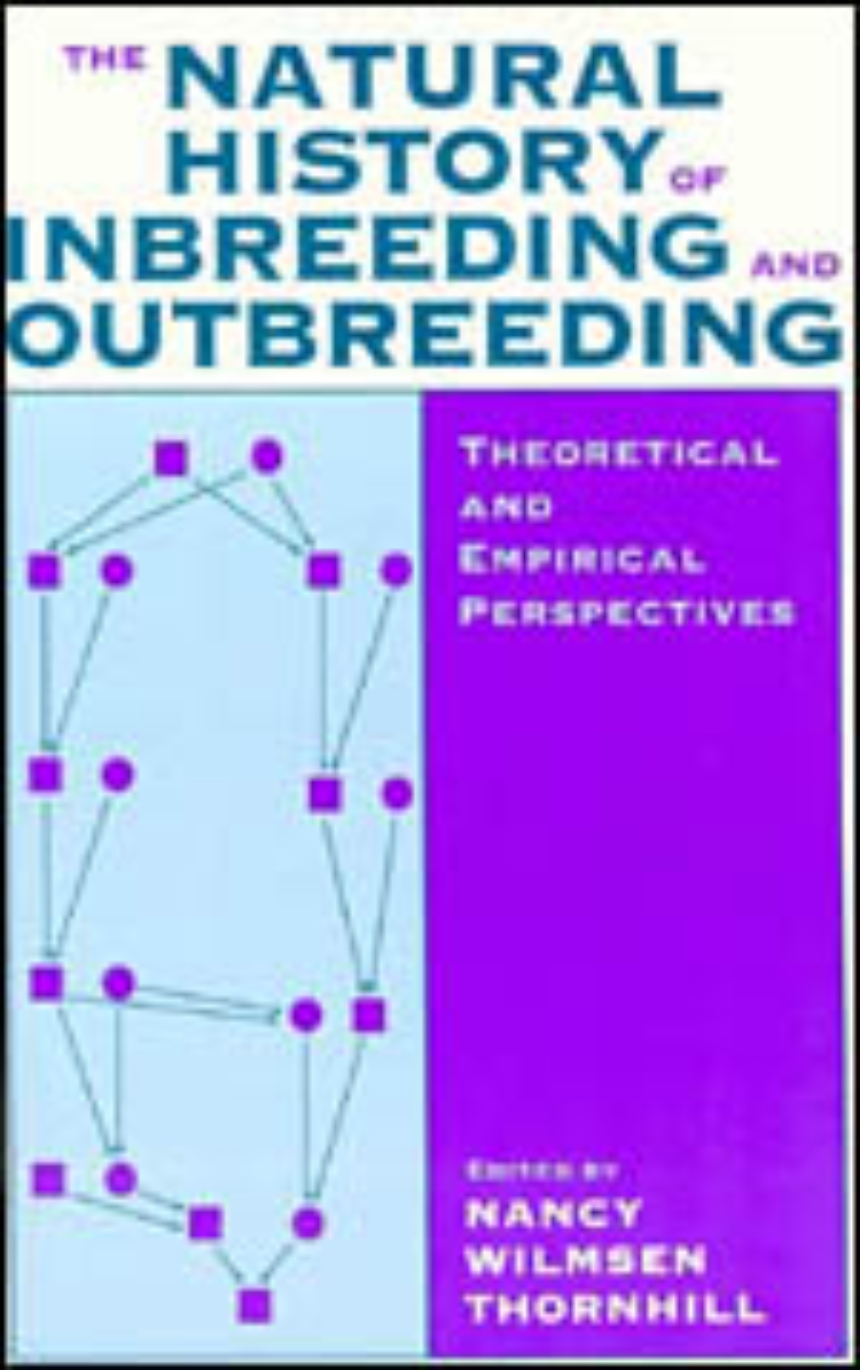The Natural History of Inbreeding and Outbreeding
Theoretical and Empirical Perspectives
9780226798547
The Natural History of Inbreeding and Outbreeding
Theoretical and Empirical Perspectives
Inbreeding, the mating of close kin, and outbreeding, the mating of distant relatives or unrelated organisms, have long been important subjects to evolutionary biologists. Inbreeding reduces genetic diversity in a population, increasing the likelihood that genetic defects will become widespread and deprive a population of the diversity it may need to cope with its environment. Most plants and animals have evolved behavioral and morphological mechanisms to avoid inbreeding. However, today many endangered species exist only in small, very isolated populations where inbreeding is unavoidable, so it has become a concern for conservationists. In this volume, twenty-six experts in evolution, behavior, and genetics examine the causes and consequences of inbreeding.
The authors ask whether inbreeding is as problematic as biologists have thought, under what ecological conditions inbreeding occurs, and whether organisms that inbreed have mechanisms to dampen the anticipated problems of reduced genetic variation. The studies, including theoretical and empirical work on wild and captive populations, demonstrate that many plants and animals inbreed to a greater extent than biologists have thought, with variable effects on individual fitness. Graduate students and researchers in evolutionary biology, animal behavior, ecology, and conservation biology will welcome this wide-ranging collection.
The authors ask whether inbreeding is as problematic as biologists have thought, under what ecological conditions inbreeding occurs, and whether organisms that inbreed have mechanisms to dampen the anticipated problems of reduced genetic variation. The studies, including theoretical and empirical work on wild and captive populations, demonstrate that many plants and animals inbreed to a greater extent than biologists have thought, with variable effects on individual fitness. Graduate students and researchers in evolutionary biology, animal behavior, ecology, and conservation biology will welcome this wide-ranging collection.
584 pages | 49 line drawings, 41 tables | 6 x 9 | © 1993
Biological Sciences: Behavioral Biology, Evolutionary Biology
Table of Contents
1. Sex, Mating Systems, Inbreeding, and Outbreeding
Nickolas M. Waser
Part One Theoretical Perspectives
2. Theory and Data Pertinent to the Relationship between Heterozygosity and Fitness
Jeffry B. Mitton
3. The Evolution of Inbreeding in Haploidiploid Organisms
John H. Werren
4. Genetic Incompatibility as a Eugenic Mechanism
Marcy K. Uyenoyama
5. Inbreeding and the Evolution of Social Behavior
Richard E. Michod
6. The Statics and Dynamics of Mating System Evolution
Donald M. Waller
7. Small Populations, Inbreeding, and Speciation
Daniel J. Howard
8. The Natural and Unnatural History of Inbreeding and Outbreeding
William M. Shields
Part Two Empirical Perspectives
9. Population Structure, Optimal Outbreeding and Assortative Mating in Angiosperms
Nickolas M. Waser
10. Inbreeding and Outbreeding in marine Invertebrates
Nancy Knowlton and Jeremy B. C. Jackson
11. Inbreeding and Outbreeding in Fishes, Amphibians, and Reptiles
Bruce Waldman and Jeffrey S. McKinnon
12. Evidence for and Consequences of Inbreeding in the Cooperative Spiders
Susan E. Riechert and Rose Marie Roeloffs
13. Inbreeding in Birds
Ian Rowley, Eleanor Russell, and Michael Brooker
14. The Natural History of Inbreeding and Outbreeding in Small Mammals
Andrew T. Smith
15. Inbreeding and Outbreeding in Captive Populations of Wild Animal Species
Robert C. Lacy, Ann Petric, and Mark Warneke
16. Dispersal, Kinship, and Inbreeding in African Lions
Craig Packer and Anne E. Pusey
17. Inbreeding and Outbreeding in Primates: What’s Wrong with "The Dispersing Sex"?
Jim Moore
Part Three: Epilogue
18. Inbreeding in Egypt and This Book: A Childish Perspective
William D. Hamilton
Nickolas M. Waser
Part One Theoretical Perspectives
2. Theory and Data Pertinent to the Relationship between Heterozygosity and Fitness
Jeffry B. Mitton
3. The Evolution of Inbreeding in Haploidiploid Organisms
John H. Werren
4. Genetic Incompatibility as a Eugenic Mechanism
Marcy K. Uyenoyama
5. Inbreeding and the Evolution of Social Behavior
Richard E. Michod
6. The Statics and Dynamics of Mating System Evolution
Donald M. Waller
7. Small Populations, Inbreeding, and Speciation
Daniel J. Howard
8. The Natural and Unnatural History of Inbreeding and Outbreeding
William M. Shields
Part Two Empirical Perspectives
9. Population Structure, Optimal Outbreeding and Assortative Mating in Angiosperms
Nickolas M. Waser
10. Inbreeding and Outbreeding in marine Invertebrates
Nancy Knowlton and Jeremy B. C. Jackson
11. Inbreeding and Outbreeding in Fishes, Amphibians, and Reptiles
Bruce Waldman and Jeffrey S. McKinnon
12. Evidence for and Consequences of Inbreeding in the Cooperative Spiders
Susan E. Riechert and Rose Marie Roeloffs
13. Inbreeding in Birds
Ian Rowley, Eleanor Russell, and Michael Brooker
14. The Natural History of Inbreeding and Outbreeding in Small Mammals
Andrew T. Smith
15. Inbreeding and Outbreeding in Captive Populations of Wild Animal Species
Robert C. Lacy, Ann Petric, and Mark Warneke
16. Dispersal, Kinship, and Inbreeding in African Lions
Craig Packer and Anne E. Pusey
17. Inbreeding and Outbreeding in Primates: What’s Wrong with "The Dispersing Sex"?
Jim Moore
Part Three: Epilogue
18. Inbreeding in Egypt and This Book: A Childish Perspective
William D. Hamilton
